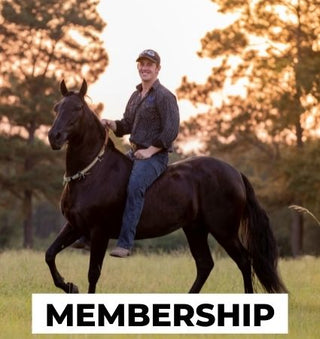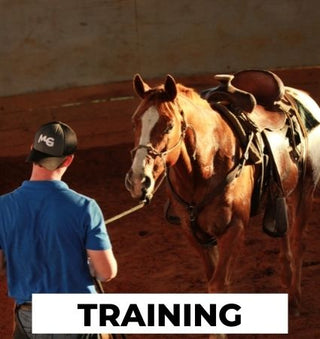Today, our focus shifts to mastering the art of transitioning from halter to bits, unraveling the secrets behind successful horse training with Michael Gascon, The Horse Guru.
Watch The Video Here Or Continue Reading Below!
Introduction
Greetings, horse enthusiasts! It's Michael Gascon, The Horse Guru, here to dive into a scorching topic that has intrigued riders for ages: the transition from a scoring horsemanship halter to bits. Join me on a journey as I unveil the exact order I prefer, a recipe that has been a key to success in my equestrian endeavors for a considerable time. Let's explore the process step by step and empower you to build a strong connection with your horse.
Halter First: The Foundation of Communication
Discovering Respect and Responsiveness
First and foremost, I advocate for starting with a halter, regardless of the horse's history or training level. By initiating the conversation on the outside of the horse's face, I can assess its responsiveness and respect for basic pressures. This initial phase allows me to understand the horse's demeanor, from its willingness to yield to pressure to its overall responsiveness.
Navigating the Halter Configuration
Understanding the dynamics of the halter configuration is crucial. I focus on the center knot, using it as a starting point for communication. Various knots serve purposes beyond pressure, aiding in the attachment of reins and providing torque when needed. This method proves effective, especially with stiff or resistant horses, allowing for a smoother interaction.
Progressing through Commands
Once I establish control over the horse's head and back, commanding movements like walk, trot, canter, or gait become more feasible. The halter serves as a kinder tool than a bit in steering the horse toward potentially intimidating obstacles. It sets the stage for a deeper conversation about direction without relying on the horse's mouth.
Transitioning to a Snaffle: Softening the Experience
Introducing a Full Cheek Snaffle
With a foundation laid in the halter, the next step involves transitioning to a snaffle. I opt for a full cheek snaffle, emphasizing the d's on the sides. This selection provides a soft mouthpiece with ample surface area, mimicking the halter's effect. The goal is to acclimate the horse to having something in its mouth, fostering a smooth shift from halter to bit.
Understanding Snaffle Varieties
As the horse becomes familiar with giving to pressure, I progress to a snaffle with shanks. The addition of shanks introduces lateral pressure, distinguishing it from the direct contact of the halter and basic snaffle. This phase prepares the horse for more nuanced commands and aids in refining movements such as spins and lead changes.
Graduating to Advanced Bits: Tailored for Precision
Exploring Curved Bits
For advanced maneuvers and refined communication, I turn to curved bits. These bits, characterized by a curve in the chain, offer a different dimension to control. It's essential to comprehend the effect of picking hands up or down, as this bit influences the horse's head position accordingly. The curve adds complexity, ideal for horses ready for more sophisticated training.
Solid Bits for Confidence Building
In the final stage, I introduce a solid bit, free from breaks and equipped with tongue relief. This type of bit promotes consistency and minimizes the chances of the horse grabbing hold of it during moments of anxiety or fear. Solid bits become the go-to choice once the horse has achieved a level of calmness, confidence, and education.
Conclusion: A Recipe for Success
Respecting the Education Process
Success in horse training lies not in applying undue pressure but in educating the horse progressively. The recipe I swear by involves starting with a halter, moving through snaffle variations, and culminating in a solid bit. Each phase builds upon the horse's education, ensuring a confident and responsive partner in every ride.
Avoiding Unpleasant Surprises
Jumping to a more severe bit without proper education sets the stage for potential issues. Horses, much like humans, require understanding and communication. The recipe outlined here minimizes the risk of accidents and fosters a bond based on mutual respect.
Incorporate this recipe into your training routine, and I assure you a rewarding and enjoyable experience with your horse. Thank you for tuning in, and may your equestrian journey be filled with success and satisfaction!
Check out more free training resources HERE!









